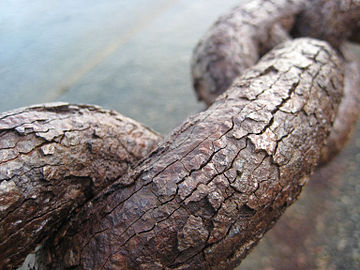Did you know?
You can double click on a word to look it up on TermGallery.
You can double click on a word to look it up on TermGallery.
Meanings of reduction-oxidation reaction in English
Russian
восстановители Portuguese
reacções de oxirredução Catalan
reacció d'oxidació-reducció Spanish
reacción redox 
Chemical reaction involving reduction and oxidation of different species.
Synonyms
Examples for "redox"
Examples for "redox"
1
However, the identity of most redox-regulated mitochondrial proteins remains to be defined.
2
This process obviates the need for exogenous enzymes and redox mediator supplements.
3
These findings reveal a new layer of nitroso-redox imbalance in dystrophic cardiomyopathy.
4
These single-domain flavoenzymes display redox potentials compatible with electron transfer between partners.
5
Hence, there is interest in redox and metabolic modulators as anticancer agents.
1
Their versatility, which arises from an ability to undergo reduction-oxidation chemistry, enables them to act as critical cofactors of enzymes throughout the cell.
2
Reactive oxygen species, generated by reduction-oxidation (redox) reactions, have been recognized as one of the major mediators of ischemia and reperfusion injury in the brain.
3
Reduction-oxidation (redox) signaling systems are emerging as important targets in pancreatic cancer.
1
Iron-sulfur clusters are prosthetic groups commonly found in proteins that participate in oxidation-reduction reactions and catalysis.
2
The N-terminus of MTRR containing a conserved domain of FMNRed is closely concerned with the oxidation-reduction process.
3
The mutated proteins show spectral properties similar to those of the wild-type enzyme, in all oxidation-reduction states.
4
This is in accord with the high oxidation-reduction potential of the flavin, which thermodynamically stabilizes the reduced enzyme.
5
In comparison, 27 proteins were up-regulated in dark-cutting beef related to oxidation-reduction processes, muscle contraction, and oxidative phosphorylation.
1
This cyclic redox reaction of the metal generates OH.
2
Taken together these data demonstrate that H296 is responsible for proton exchange in the redox reaction.
3
Flavin-based electron-bifurcation is a mechanism that couples an exergonic redox reaction to an endergonic one allowing energy conservation in anaerobic microorganisms.
4
This provides mass spectrometric evidence for the mechanism of the nitro to amine conversion process during nitroreduction, an important redox reaction involved in carcinogenesis.
5
Re-evaluating these previous data we here discuss a mechanism, by which the redox reaction of N2 induces conformational changes possibly leading to proton translocation.
Translations for reduction-oxidation reaction
Russian
Portuguese
Catalan

